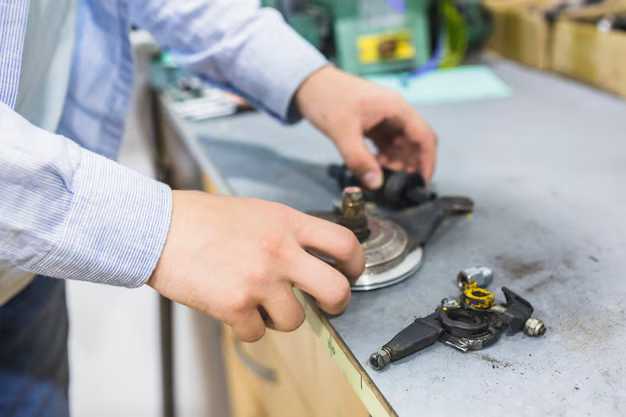Why Isn’t Your Refrigerator Cooling? Uncovering the Mystery
A refrigerator is often considered one of the most reliable appliances in your home. However, when it stops cooling, the worry sets in, and the hunt for groceries to salvage begins. In this comprehensive guide, we’ll explore the core reasons why a refrigerator might stop cooling, delving into practical troubleshooting tips and insightful considerations that can empower every homeowner with the knowledge they need to keep their fridge running smoothly.
🧊 Common Culprits Behind a Refrigerator Not Cooling
1. Power Supply Issues
It seems basic, yet often overlooked, the power supply is the first place to check when your refrigerator stops cooling. If your fridge isn't getting electricity, it certainly won't keep your food cold.
- Check the Outlet: Ensure the refrigerator is firmly plugged in and the outlet is working by testing another device in the socket.
- Inspect the Circuit Breaker: Sometimes, a tripped breaker can cut power to the fridge. Locate your home's electrical box and reset the relevant breaker if necessary.
2. Thermostat Settings
Accidental adjustments or malfunctioning controls can lead to improper cooling. Your thermostat is crucial to maintaining the right environment inside your fridge.
- Verify Thermostat Settings: Set the thermostat to the recommended temperature, typically between 37-40°F (3-4°C) for the fridge and 0°F (-18°C) for the freezer.
- Inspect for Damage: If settings are correct yet cooling is insufficient, the thermostat itself might be faulty. Consider testing or replacing it.
3. Overloading the Fridge
Packing in too many items can restrict airflow, a necessary component for efficient cooling.
- Reduce Load: Try to keep items organized with space between them, ensuring cold air circulates freely.
- Clean Obstructions: Regularly remove old or expired items to reduce load and improve airflow.
🔧 Mechanical and Technical Issues
4. Dirty Condenser Coils
The condenser coils, usually located under or behind the refrigerator, are responsible for releasing heat. If these coils are covered in dust, they might not function effectively.
- Regular Cleaning: Use a vacuum or coil cleaning brush to remove dust and debris every six months.
- Access and Safety: Always unplug the refrigerator before cleaning to prevent any electrical hazards.
5. Faulty Evaporator Fan
The fan is crucial in circulating cold air throughout the fridge and freezer compartments.
- Listen for Strange Noises: A loud or unusual sound might indicate an issue with the evaporator fan.
- Test the Fan Motor: If your fridge isn’t cooling well and the fan doesn’t seem to be running, the motor might need replacement.
6. Broken Door Seal
A damaged gasket allows warm air to enter, hindering the cooling process.
- Perform the Dollar Bill Test: Close the door on a dollar bill to test the seal. If it slides out easily, the gasket is likely compromised.
- Replace Gaskets Promptly: New gaskets can be purchased and replaced to ensure a proper seal.
⚠️ Systemic Problems and Solutions
7. Malfunctioning Compressor
The compressor acts as the heart of your refrigerator's cooling system, pumping refrigerant through the system.
- Listen for Clicking Noises: If the compressor is struggling, it often makes clicking sounds.
- Professional Diagnosis: Compressors can be complex and costly to fix, often requiring professional repair or replacement.
8. Refrigerant Leakage
Without proper refrigerant levels, a refrigerator cannot maintain its internal temperature.
- Look for Oily Residue: Leakage often results in an oily residue near the coils.
- Seek Professional Help: Handling refrigerant issues should be left to skilled technicians due to environmental and safety concerns.
🌟 Key Takeaways: Maintaining Optimum Cooling
Here's a concise summary with actionable tips to help your refrigerator keep cool:
- 🧹 Keep Coils Clean: Dust off the condenser coils every six months.
- 🔌 Secure Power Supply: Regularly check power connections and circuit breakers.
- 🍱 Organize and Optimize: Avoid overloading while maintaining airflow among items.
- 🏷️ Check Thermostat and Seal: Regularly verify settings and gasket integrity.
- 🔧 Detect and Address Faults: Listen for unusual noises and perform basic diagnostics.
🚧 Long-Term Care and Prevention
Schedule Routine Maintenance
Regular check-ups can prevent major issues from developing. Consider scheduling annual professional maintenance to keep your fridge in top shape.
Invest in a Surge Protector
Power surges can damage your fridge's internal components. A surge protector can help shield it from unexpected voltage spikes.
Smart Habits
Adopt habits that help prolong your refrigerator’s life. This includes not leaving the door open for extended periods and frequently checking for spoilage to avoid overstocking.
Conclusion
Navigating the challenge of a non-cooling refrigerator can be frustrating, but understanding the potential reasons and solutions can restore both your appliance and peace of mind. From simple checks on the power supply to more complex mechanical diagnostics, knowing when to solve issues independently and when to call a professional is essential. Keep your refrigerator in its best condition by considering both immediate fixes and long-term preventive measures. Whether it’s cleaning those coils or tightening up that door seal, small actions make a big difference in functionality and longevity. With these insights at your disposal, you’re well-equipped to tackle and resolve any cooling issues that come your way.
